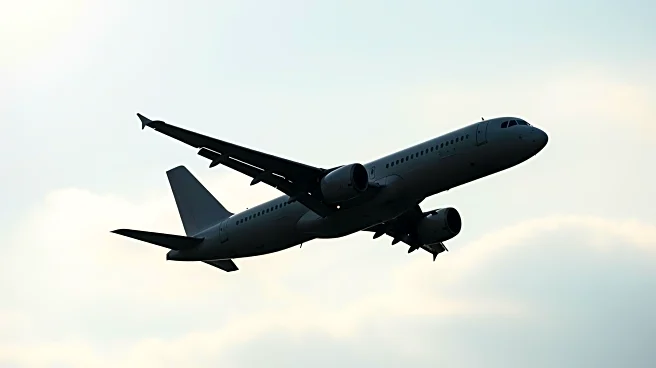What's Happening?
Somon Air, the national airline of Tajikistan, has announced its largest aircraft order to date, acquiring up to 14 Boeing planes. This includes four Boeing 787-9s and ten Boeing 737 MAX 8s. The order was
signed at the C5+1 Summit, indicating a politically motivated announcement. Somon Air plans to use the new Dreamliners for intercontinental routes from Dushanbe, while the 737 MAXs will support short and medium-haul networks, replacing older 737 models. The new aircraft are expected to deliver a 20-25% reduction in fuel consumption compared to the planes they will replace.
Why It's Important?
This significant order marks a major expansion for Somon Air, enhancing its capacity to offer improved services and expand its route network. The acquisition of Boeing's state-of-the-art aircraft reflects the airline's commitment to modernizing its fleet and improving passenger experience. The reduction in fuel consumption aligns with global trends towards more environmentally friendly aviation practices. This move could position Somon Air as a competitive player in the Central Asian aviation market, potentially boosting regional connectivity and economic growth.
What's Next?
While the timeline for delivery remains unclear, Somon Air's expansion plans could lead to increased competition in the region, prompting other airlines to upgrade their fleets. The political context of the order suggests potential diplomatic implications, as aviation deals often reflect broader geopolitical relationships. Stakeholders will be watching to see if the order is finalized and how it impacts the airline's operations and market presence.
Beyond the Headlines
The order highlights the growing importance of Central Asia in global aviation, with airlines in the region increasingly investing in modern fleets. This trend could lead to enhanced regional connectivity and economic development, as improved air travel facilitates trade and tourism. The environmental benefits of newer aircraft models also contribute to global efforts to reduce aviation's carbon footprint.













